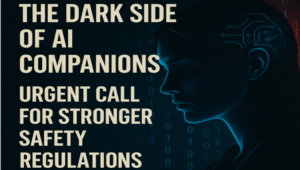The immune system of the body is bolstered by CAR-T cell therapy to combat certain blood malignancies—everything you need to know about CAR-T cell therapy’s applications, risks, and expenses.
ImmunoACT, a company based at IIT Bombay, announced earlier this month that the Central Drugs Standard Control Organization (CDSCO) had approved NexCAR19 (actalycabtagene autoleucel), a CAR-T cell cancer therapy for the treatment of specific lymphomas and leukemias.
Every year, millions of new instances of cancer are recorded worldwide. Perhaps the most challenging problem in the medical and health fields is cancer. But thanks to technological advancements, researchers have created some therapy plans to battle some tough and severe cancer types. Chimeric Antigen Receptor T cell (CAR-T cell) therapy is one such treatment method that can be applied to leukemia and lymphomas. Let’s find out more about this treatment and how cancer patients can profit from it.
CAR T-cell therapy: What is it?
Billion lymphocytes, neutrophils, and monocytes make up our immune system, which fights off different infections. Three subtypes of lymphocytes exist:
– B lymphocytes, often known as B-cells, Generate antibodies to fight illnesses
– T lymphocytes, called T-cells, help produce B cells and eradicate diseased cells.
– Kills diseased cells using natural killer cells
Through genetic modification, chimeric antigen receptor (CAR) T-cell treatment, also known as CAR T-cell therapy, increases the T-cells’ ability to combat cancer cells in the body.
How is CAR T-cell treatment administered?
The following steps are included in the CAR T-cell treatment process:
– A blood sample is taken from the patient’s arm. The patient’s blood is replaced after the removal of white blood cells (WBCs).
– T cells are isolated from white blood cells and transferred to a laboratory to express the chimeric antigen receptor (CAR) gene.
– This results in CAR T-cells, which are cultivated and multiplied for a few weeks in a laboratory.
– The patient receives CAR T-cells once enough quantity has been generated. Chemotherapy is typically administered to the patient before CAR T-cell infusion to reduce the immune system’s reaction to the newly infused immune cells.
What cancers can be treated with CAR T-cell therapy?
Patients with blood cancer who don’t react to chemotherapy or other forms of treatment are typical candidates for CAR T-cell therapy. Lymphomas and leukemias are treated using it.
- Leukemia
An unregulated, rapid proliferation of abnormal white blood cells characterizes a form of blood cancer called leukemia. It mainly affects the bone marrow, which makes it more difficult for it to fight infections and produce blood cells and platelets. Acute lymphocytic leukemia (ALL), a kind of leukemia that affects children more frequently than adults, is commonly treated using CAR T-cell therapy. Notably, end-stage ALL patients who received CAR T-cell therapy had a full recovery of up to 92%.
- Lymphoma
A cancer that affects the body’s lymphatic system is called lymphoma. The organs, tissues, and veins that combat infections are part of the lymphatic system. Lymphoma is a type of blood cancer that develops in the lymphatic system’s WBCs. Hodgkin lymphoma and non-Hodgkin lymphoma are the two varieties of lymphoma. Targeting the CD19 antigen with CAR T-cell treatment has demonstrated encouraging outcomes for individuals with specific forms of large B-cell lymphoma that have relapsed (appeared again) or are refractory (continue to grow).
What adverse reactions can CAR T-cell therapy cause?
The following are the most typical CAR T-cell treatment adverse effects:
- Cytokine release syndrome (CRS)
This is one of the CAR-T cell therapy’s potentially dangerous adverse effects. Cytokines are chemical messengers created in enormous quantities when CAR-T cells proliferate and combat cancer in the body. The patient may have symptoms including headache, nausea, dizziness, diarrhea, fever, and chills as a result of this. But the more severe CRS symptoms could be as follows:
– Excessively elevated heart rate (tachycardia)
Lower blood pressure
– Heart conditions such as cardiac arrest, heart failure, and arrhythmias
– Hypoxia, or insufficient oxygen entering the body
– Nephrotic problems
– Failure of many organs
Following the infusion of CAR-T cells, these symptoms can appear one to twenty-one days later and necessitate critical care management.
- Symptoms of the nervous system
During the first week of infusion, CAR-T cell therapy can impact the body’s neurological system and cause the following symptoms:
– A headache
– Having trouble speaking
– Sensing restlessness
– Having trouble balancing
– Seizures or tremors
In addition to these two main adverse effects, individuals may have low blood cell counts, allergic responses, or compromised immune systems after receiving CAR-T cell infusions.
Is the cost of CAR-T cell therapy high?
CAR-T cell therapy is an expensive cancer treatment despite being a novel and promising treatment. The causes could be as follows:
– The medication’s production procedure is intricate.
– Each patient’s treatment is tailored based on their cancer kind and immunological response.
– Before receiving permission for clinical usage, the medicine is subjected to multiple clinical trials and regulatory compliance.
– Long-term follow-up is necessary for the therapy because of its possible adverse effects.
The anticipated cost of ImmunoACT’s NexCAR19 therapy is between Rs 30 to 40 lakh per patient, a tenth of what it would cost to receive the treatment overseas.
In conclusion
For patients whose cancer has relapsed or who don’t react to chemotherapy, CAR T-cell therapy is a revolutionary treatment. To determine if they should choose CAR T-cell therapy, a patient must speak with their oncologist due to the high expense of treatment and possible adverse effects.















